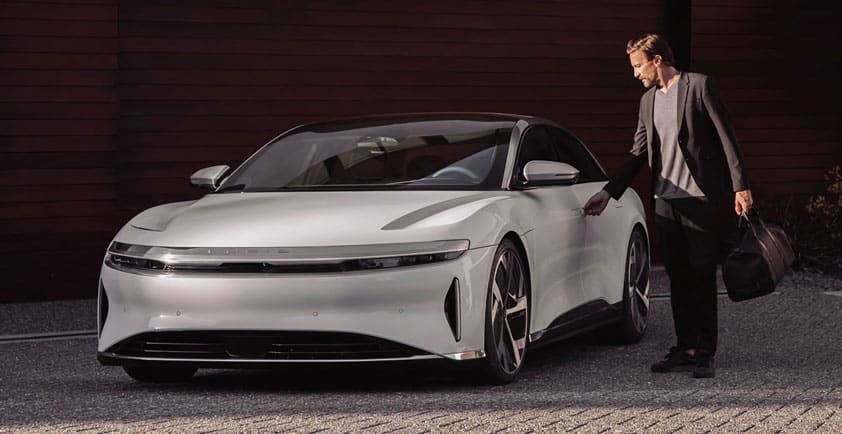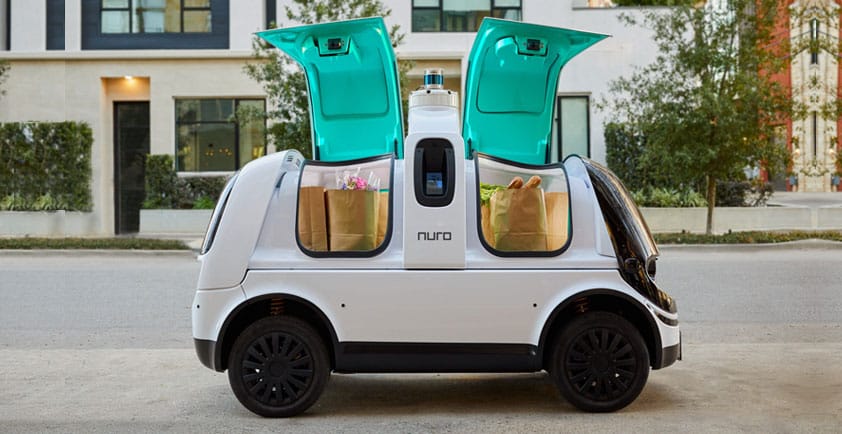

O2 LAUNCHES FIRST COMMERCIAL 5G SATELLITE LAB IN THE UK TO TEST AUTONOMOUS VEHICLES
>> Businesses are now able to use the ‘Darwin SatCom Lab’ to explore and trial next-gen connectivity solutions for connected and autonomous vehicles
>> Using both 5G and satellite communications, the Lab is the latest innovation to be announced as part of Project Darwin, supported by the European Space Agency and O2
>> O2-customised autonomous vehicles are available to test proofs of concept
Today, O2 announces the launch of the first commercial laboratory for 5G and satellite communications in the UK as part of Project Darwin, a four-year trial programme supported by O2 and the European Space Agency and based in the Harwell Science and Innovation Campus in Oxfordshire.
The laboratory, named the Darwin SatCom Lab, is now open to companies looking to explore next generation connectivity solutions for connected and autonomous vehicles (CAVs) using both 5G and satellite communications.
Companies are now able to test proofs of concept using two Renault TWIZY electric cars, which O2 has converted into CAVs and fitted with LIDAR sensors to allow them to be controlled from the Lab and driven around the Harwell Campus.


Satellite communications will be able to play a crucial role in the extension of 5G networks to allow seamless connectivity to remote and harder-to-reach areas for trains and road vehicles, providing reliable access to the whole of the UK.
Using 5G equipment provided by Nokia and geosynchronous communications satellites (GEOs) provided by Hispasat, the Spanish satellite operator, O2’s 5G Innovation team can remotely track the status of the CAVs, including their position, movement and speed. A digital twin version will also be broadcast to screens in O2’s laboratory at the University of Glasgow, unveiled in March,1 and at the company’s headquarters at Bath Road, Slough.
Using 5G and satellite communications to revolutionise deliveries
One of the proofs of concept already being tested at the Darwin SatCom Lab tracks the CO2 emissions of the vehicles using the LIDAR sensors.
By using satellite imagery to see the areas the vehicles are travelling through and monitor local biodiversity, the laboratory team is able to calculate the emissions savings of taking different routes based on carbon capture from nearby trees. This research will inform how O2’s retail partners carry out last mile deliveries, bringing goods such as groceries directly to their customers.
First announced in June 2019, Project Darwin brings together Oxford and Glasgow Universities, Hispasat, start-ups specialising in self-driving mobility solutions and Darwin Innovation Group Oxford, in order to test new technologies and end-to-end connectivity solutions with 5G and satellite communications.
The Darwin SatCom Lab is open to companies who want to test the power of 5G and satellite communications connectivity by bringing their ideas to life. Businesses that would like to develop a proof of concept can book the Lab through this website: darwin.eaglelab.net/.
Derek McManus, COO at O2 said: “We’re delighted to announce that the Darwin SatCom Lab is now open for business at Harwell Campus, allowing companies to put theory into practice and test innovative ideas using our connected and autonomous vehicles.
“The Lab is further proof that O2 is at the forefront of connectivity and accelerating Britain’s recovery by helping British businesses to harness the power of 5G and satellite communications in order to benefit their customers. It’s the next step in getting autonomous vehicles on the road and making the UK’s transport network greener.”
Amanda Solloway MP, Minister for Science, Research and Innovation said: “The UK’s space sector is applying pioneering technologies such as satellite and 5G to essential products and services that will help to transform our everyday lives.
“I am incredibly excited that O2’s first of its kind driverless car lab will enable our most innovative businesses to test these technologies and bring us another step closer to putting self-driving vehicles safely on our roads.”
Antonio Franchi, 5G Strategic Programme Manager at the European Space Agency said: “We are excited to continue working on 5G projects with our partners, especially the Darwin SatCom Lab located on the Harwell Campus, which is also home to the ESA’s European Centre for Space Applications and Telecommunications.
“The Lab, showcasing the integration of 5G and satellite communications for CAVs, is a great example of how next-gen 5G networks will enable new applications and services thanks to their ubiquity, security and resilience.”
Inés Sanz, Head of Customer Engineering at Hispasat said: “The Darwin SatCom Lab represents a valuable opportunity for companies to develop 5G applications for connected vehicles that will work on the most appropriate platform in terms of technical requirements and cost efficiency. Connected and autonomous vehicles represent a key segment in the 5G ecosystem – and satellites are the perfect solution to enable connectivity, even in remote areas.”
Dr. Joanna Hart, Harwell Space Cluster Development Manager at Harwell Campus said: “Having the Darwin SatCom Lab within the Harwell Space Cluster, which brings together expertise and capabilities from academia, industry and the public sector, offers forward-looking companies the opportunity to harness the power of 5G and satellite communications and make their ideas a commercial reality. We look forward to opening up the Lab to a national and international audience who want to put theory into practice using CAVs.”
Rodrigo Barreto, Head of Enterprise Architecture at the Darwin Innovation Group said: “We are very excited that the Darwin SatCom Lab, in partnership with Telefónica and Hispasat, offers companies a place where they can test innovative solutions and develop proof points to support new initiatives. The strength of the Lab lies in combining 5G and satellite communications, opening up the possibility of creating mobility services that can fall back on satellite communications in scenarios where 5G is not always available.”












